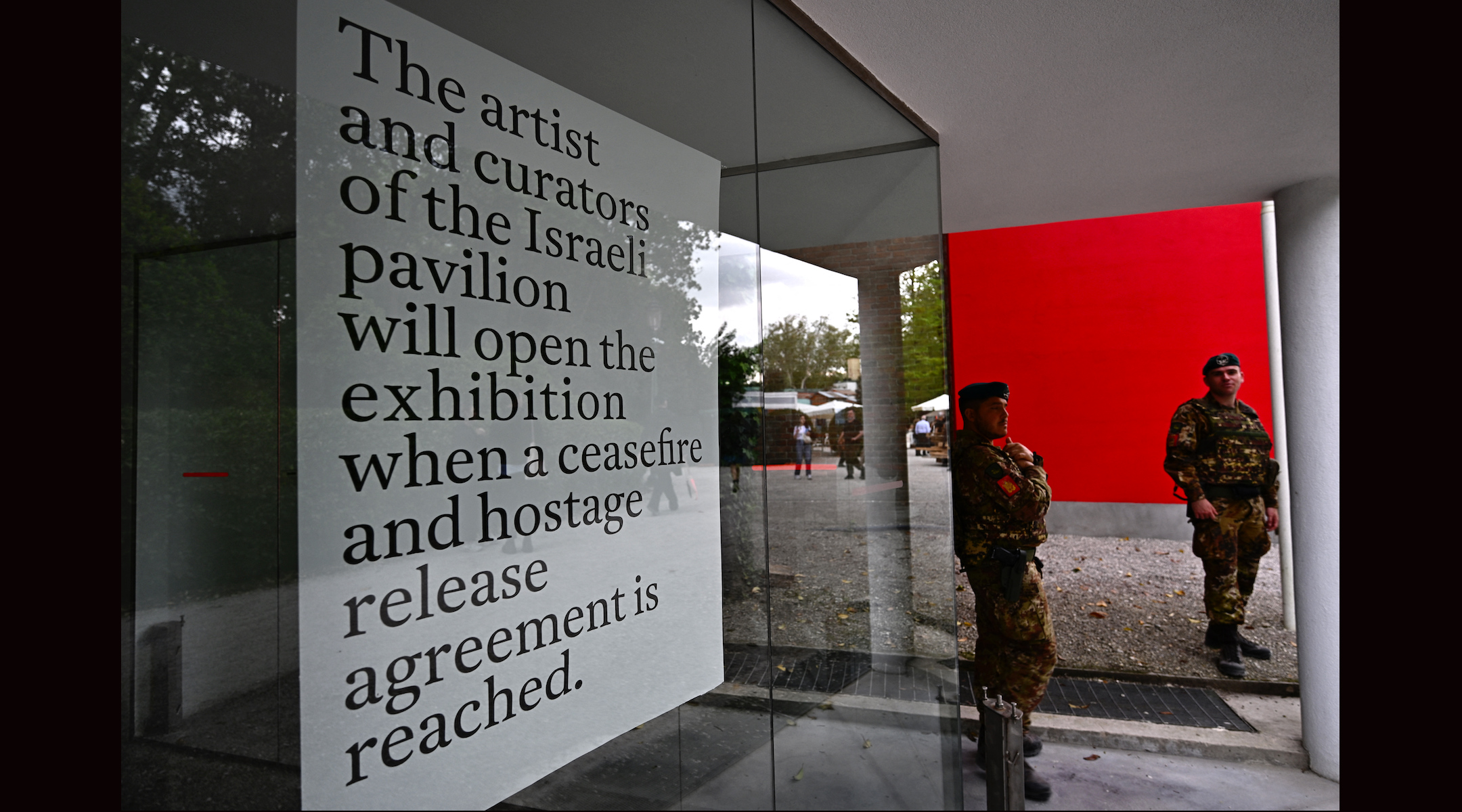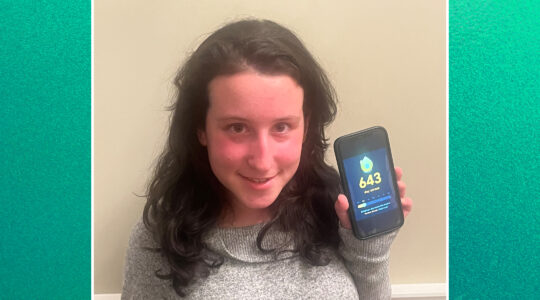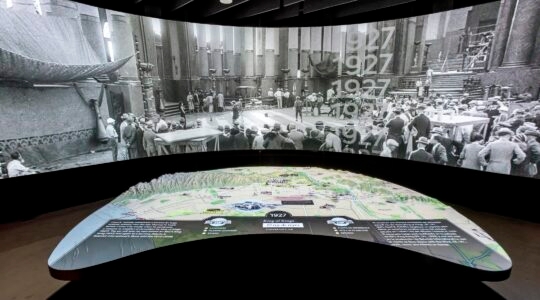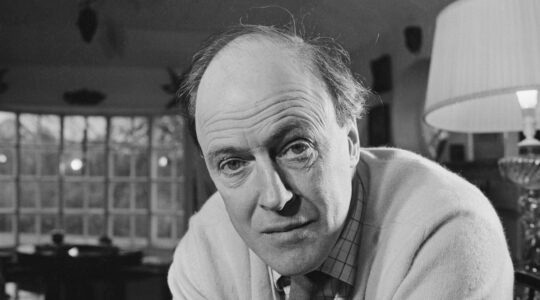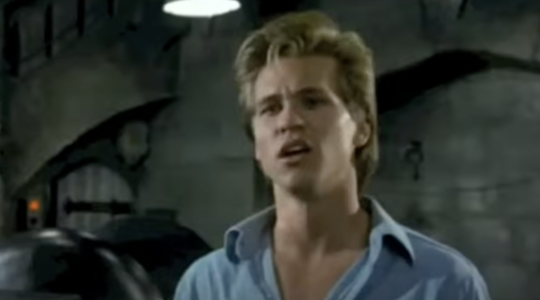(JTA) – The artist representing Israel at one of the world’s foremost contemporary art exhibitions is shutting down her exhibit until a deal for a ceasefire in Gaza and the release of hostages is reached.
Ruth Patir, whom Israel selected as its official representative at the Venice Biennale, closed her country’s pavilion on Tuesday with her artwork fully installed inside. To the door she affixed a note reading, “The artist and curators of the Israeli pavilion will open the exhibition when a ceasefire and hostage release agreement is reached.”
Protests in the art world over Israel’s war with Hamas have become commonplace since Oct. 7, and some artists unsuccessfully pushed for Israel’s exclusion from the Biennale because of the war. Patir’s action is unusual because she is an Israeli publicly rebuking her government on the world stage.
“I firmly object to [the] cultural boycott, but since I feel there are no right answer[s], and I can only do what I can with the space I have, I prefer to raise my voice with those I stand with in their scream,” Patir wrote on Instagram Tuesday, explaining her decision. “Ceasefire now, bring the people back from captivity. We can’t take it anymore.”
Israel’s government did not know about Patir’s actions before she took them, according to The New York Times. She had been selected as Israel’s official Venice Biennale artist in September, prior to the Oct. 7 Hamas attack and the outbreak of war, and the country has paid for half the costs of the pavilion.
Since the war began, Patir said she has regularly joined protests in Tel Aviv calling for a ceasefire deal that would release the estimated 130 hostages still being held by Hamas. The protests also oppose Israeli Prime Minister Benjamin Netanyahu, whom the protesters and even some negotiators say has acted with indifference to the plight of the hostages and their families. (Polls have found that while Netanyahu is deeply unpopular in Israel, most Israelis support continuing the war.)
She came to the decision to shut the pavilion alongside her Israeli curators, Tamar Margalit and Mira Lapidot, who are also supporting the action. A small video installation, connected to Patir’s overall exhibit theme of maternal health, is visible from the pavilion door. The exhibit itself is called “(M)otherland” and was inspired by Patir’s own health struggles; after being diagnosed with a gene mutation that increases her risk of breast and ovarian cancer, doctors advised her to freeze her eggs.
The artist and curators hope a ceasefire and hostage deal will be reached and they will be able to reopen their pavilion long before the scheduled end of the Biennale in November.
Of the more than 130 Israelis held hostage in Gaza, as many as 100 are thought to remain alive. Hamas and Israel have been locked for weeks in negotiations over a potential deal that would include at least a temporary ceasefire and the release of some hostages in exchange for the release of a larger number of Palestinian security prisoners from Israeli prisons.
Hamas’ Oct. 7 attack killed approximately 1,200 people, mostly civilians, and took some 250 hostage. Israeli forces have killed more than 30,000 Palestinians in Gaza in the six months of the war, many of them civilians, drawing intense international criticism. More than 250 Israeli soldiers have been killed in the invasion of Gaza.
Netanyahu has insisted that a planned operation in Rafah, where more than 1 million Gazans have sought refuge during the war, will still go through despite opposition from the United States.
Israel’s participation at the Biennale had come under fierce protest from a coalition of pro-Palestinian artists, who demanded that Venice shut it down in light of what they deemed a “genocide” in Gaza, a claim Israel rejects. The coalition, Art Not Genocide Alliance, has thousands of signatories including some artists with Jewish background, such as Nan Goldin, Adam Broomberg and Eyal Sivan, as well as the official Biennale representatives of Chile, Finland, Nigeria and around a dozen other countries.
The Venice Biennale’s organizers have said that any country with diplomatic relations with Italy is entitled to a pavilion; the event is meant to bring together the leading artists from nearly every country on Earth in one space.
On Instagram the alliance took credit for Patir’s action, writing, “The artistic team of the Israeli pavilion has retreated as a direct consequence of widespread pressure and our collective campaign.”
Yet the coalition still had harsh words for Patir and her team, calling their shuttering of the pavilion “empty and opportunistic gestures timed for maximum press coverage.” The alliance criticized the fact that part of the exhibit was still visible from the pavilion door.
“NO WINDOW DISPLAY,” the team wrote on Instagram in all-caps, reiterating its strict demands: “An end to the genocide being perpertrated [sic] by Israel against Palestinians in Gaza, an end to the apartheid and an end to the occupation of Palestine.”
For her part, Patir, who was born in the United States and has studied in both Israel and New York City, is regretful about the current state of the exhibition.
“I hate it,” Patir told the New York Times about her decision. “But I think it’s important.”
JTA has documented Jewish history in real-time for over a century. Keep our journalism strong by joining us in supporting independent, award-winning reporting.
